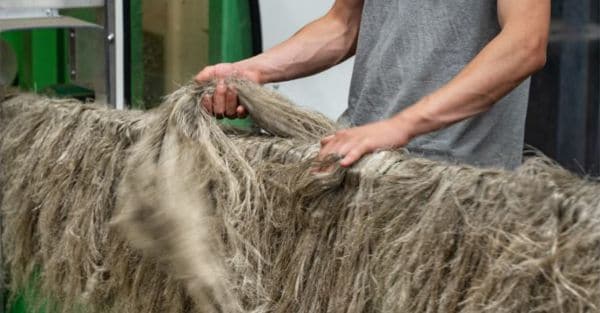The new life of European linen between innovation and sustainability

From our correspondent - SAINT-PIERRE-LE-VIGER (NORMANDY)
The most anticipated event is the circus show on linen ropes by the Appese company, which tonight, in the seventeenth-century Château de Silleron, will open the new edition of the Festival du Lin et de la Fibre Artistique, from today until Sunday in ten municipalities of the Seine-Maritime district. It has been organized since 2001 to promote and appreciate the plant historically cultivated in this region of Normandy, the first producer of high-quality linen on the planet. Its textile fiber is the oldest used by humanity (some fragments found in Georgia date back 36 thousand years); crossing the history of the Mediterranean, it found its chosen homeland in France, also thanks to Charlemagne, who in 789 required every family in the country to have the tools to weave it.
And even though today, according to Textile Exchange, it constitutes just 0.5% of fibers (polyester dominates with 57%), it is experiencing renewed, widespread success thanks to the demand of a fashion industry hungry for increasingly sustainable and traceable materials. Between 2014 and 2024 in Europe, the land cultivated with flax increased by 128% and production doubled to 200 thousand tons. Flax does not require irrigation or pesticides, its processing does not use synthetic chemistry and all waste is reused, from construction to livestock farming. Even the US one-dollar bill is made up of 25% flax fibers. Because with its delicate blue flowers, which in this area 10 km from the English Channel sway like another sea of plants, the flax plant is strong and tenacious. The tall stems are crunchy under the footsteps of those who visit the fields that stretch out in an almost borderless horizontality, interrupted only by bell towers and oaks.
"This flax is the best in the world," explains Thierry Goujon, general manager of the Terre de Lin cooperative, the largest European flax producer, founded in 1940 and which today brings together 780 companies, while caressing the plants. "The soil is excellent, the plant's long roots can go down even a meter. The climate is perfect, we have the humidity we need. This way we can obtain very long, excellent-quality fibers, the most precious and sought-after." Flax is uprooted in the summer and left to macerate on the ground until mid-September, when the stalks are collected to move on to the scutching (separation of the fibers from the woody core of the stalks) and combing phases.

Never was a term in the textile universe more appropriate to talk about linen, given that the processed fiber looks like a mass of thick blond hair (“Her hair was blonder than flax,” wrote Jean Froissart in the 14th century in L'Espinette amoureuse). “Even though there is a lot of research and technology, production is a very ancient art, which requires a lot of sensitivity from farmers,” adds Goujon. From the field we move to the industrial plant of Terre de Lin, in Saint-Pierre-le-Viger, a village of 290 inhabitants crossed by the Dun stream, which seems to have come out of a Perrault fairy tale. Goujon takes a skein of combed fiber and passes it through his fingers: “This is how we understand quality and finesse, it is something that is learned over time and that we want to pass on.”
ilsole24ore



